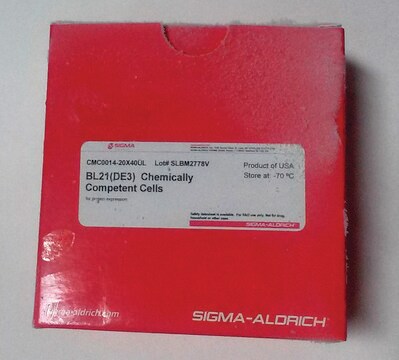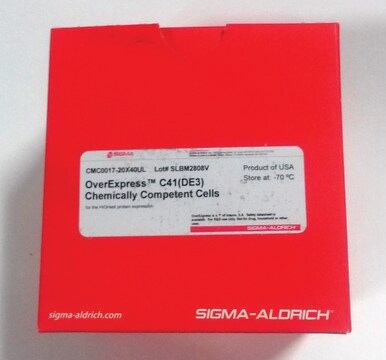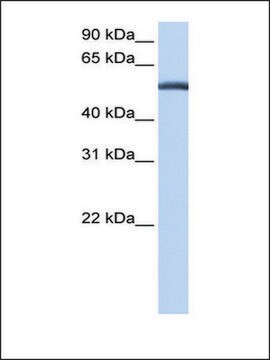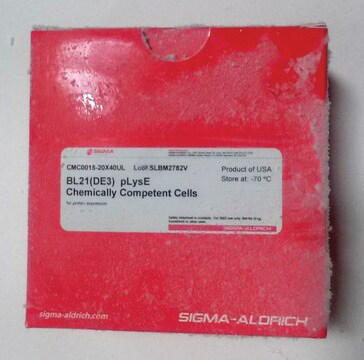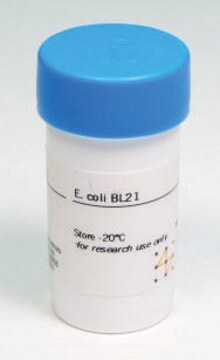CMC0014
BL21(DE3) Chemically Competent Cells
Escherichia coli, rod shaped
Synonym(e):
Competent E. coli cells
About This Item
Empfohlene Produkte
product name
BL21(DE3) Chemically Competent Cells, for protein expression
Biologische Quelle
Escherichia coli
Qualität
for molecular biology
Wachstumsmodus
adherent or suspension
Morphologie
rod shaped
Methode(n)
microbiological culture: suitable
Zelltransformation
competent cell type: chemically competent
transformation efficiency: ≥1 x 107 cfu/μg
Versandbedingung
dry ice
Lagertemp.
−70°C
Allgemeine Beschreibung
Genotype
F – ompT hsdSB (rB- mB-) gal dcm (DE3)
Anwendung
- to express tau 2N4R isoform (aa1–441) and the truncated tau (aa1–421) using pET19b as expression vector.
- BL21(DE3)Chemically Competent Cells has been used for the transformation and expressionof protegrin-1 (PG1) peptides.
- to express 6His-TEVsite-Hs ARF1 (17-181)-Q71L in pHis2 vector.
Leistungsmerkmale und Vorteile
- a transformation efficiency of >1 × 107 cfu/μg.
- economical prices
- offering superior value for everyday protein expression work.
Komponenten
- BL21(DE3) chemically competent cells
- pUC 19 transformation control DNA
- recovery medium for expression
Ähnliches Produkt
Lagerklassenschlüssel
10 - Combustible liquids
Analysenzertifikate (COA)
Suchen Sie nach Analysenzertifikate (COA), indem Sie die Lot-/Chargennummer des Produkts eingeben. Lot- und Chargennummern sind auf dem Produktetikett hinter den Wörtern ‘Lot’ oder ‘Batch’ (Lot oder Charge) zu finden.
Besitzen Sie dieses Produkt bereits?
In der Dokumentenbibliothek finden Sie die Dokumentation zu den Produkten, die Sie kürzlich erworben haben.
Artikel
Bacterial transformation is a process of horizontal gene transfer by which some bacteria take up foreign genetic material (naked DNA) from the environment. Bacteria that can take up free, extracellular genetic material are known as competent cells.
Verwandter Inhalt
BL21 Chemically Competent Cells are provided in aliquots of 80 μL sufficient for two transformation reactions of 40 μL each. Transformation is performed by heat shock at 42 °C, followed by incubation on ice.
Unser Team von Wissenschaftlern verfügt über Erfahrung in allen Forschungsbereichen einschließlich Life Science, Materialwissenschaften, chemischer Synthese, Chromatographie, Analytik und vielen mehr..
Setzen Sie sich mit dem technischen Dienst in Verbindung.
